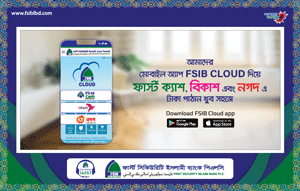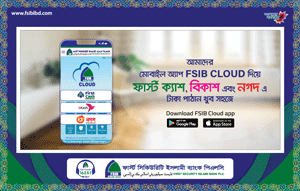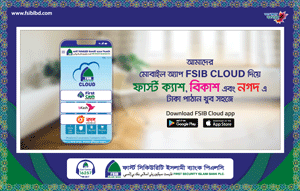Bangladesh's telecom industry is undergoing a profound transformation as it adapts to evolving consumer demands and technological advancements.
With a market size estimated at $4.87 billion in 2024, projected to grow to $5.86 billion by 2029 at a compound annual growth rate of 4.31%, this sector is poised for robust expansion.
The journey of this industry is marked by both significant achievements and substantial challenges, painting a complex picture of its current state and future trajectory.
The telecom sector in Bangladesh is heavily shaped by its dominant players.
Grameenphone, a subsidiary of the Telenor Group, leads the market with 44% of the mobile subscriber base, boasting 84.83 million subscribers as of October 2024.
Its extensive network coverage and strong brand loyalty have cemented its position as the market leader.
However, competition remains fierce.
Robi Axiata, a joint venture between Axiata Group and Bharti Airtel, holds the second-largest share with 57.88 million subscribers.
Robi has established itself as a frontrunner in data services and digital transformation initiatives, leveraging advanced technology to stay competitive.
Banglalink, owned by VEON Ltd., and the state-owned Teletalk play critical roles as well, with subscriber bases of 41.63 million and 6.52 million, respectively
The industry is fundamentally driven by the country’s growing reliance on digital connectivity.
With a total of 138.62 million internet subscribers, of which 124.88 million are mobile internet users, mobile data is the cornerstone of telecom revenue.
The proliferation of affordable smartphones has significantly contributed to this growth, making mobile internet more accessible.
Social media platforms such as Facebook, Instagram, and YouTube are primary drivers of data consumption, reflecting the changing habits of consumers who demand high-speed and uninterrupted connectivity.
Despite the positive growth trajectory, the industry faces notable challenges.
Regulatory uncertainty, particularly regarding spectrum pricing and tax policies, has been a persistent issue, creating barriers to investment and expansion.
Infrastructure limitations, especially in rural and remote areas, exacerbate the digital divide, leaving millions with limited or no access to reliable internet services.
Power outages and inconsistent energy supply further hinder operational efficiency and network reliability.
Moreover, intense competition among operators has led to price wars, affecting profitability
In recent years, the advent of 5G technology has emerged as a pivotal turning point for the industry.
While still in its nascent stage in Bangladesh, the introduction of 5G is expected to revolutionize connectivity, providing faster internet speeds, reduced latency, and higher network capacity.
Operators like Teletalk are spearheading this initiative, partnering with global technology giants such as Huawei to deploy 5G infrastructure.
Early efforts focus on expanding rural coverage, laying the groundwork for a broader rollout.
The adoption of 5G aligns with global trends and promises to transform industries ranging from healthcare to e-commerce by enabling advanced applications such as telemedicine, augmented reality (AR), and Internet of Things (IoT) solutions
The push for 5G is accompanied by significant investments in infrastructure.
Telecom operators are expanding their 4G networks while upgrading existing facilities to accommodate 5G capabilities.
This involves the deployment of small cells, advanced antennas, and extensive fibre-optic backhaul systems.
These upgrades not only enhance 5G readiness but also improve the overall performance and reliability of existing networks.
For instance, Robi and Grameenphone are focusing on expanding their rural footprints, recognizing the untapped potential of underserved regions.
The government plays a crucial role in shaping the industry’s direction.
Policies encouraging digital transformation, coupled with investments in ICT infrastructure, are central to this vision.
Programmes aimed at enhancing digital literacy and promoting e-governance are expected to increase the demand for telecom services.
However, the government must balance its ambitions with the need to create a favourable business environment for telecom operators, addressing issues such as high spectrum costs and regulatory bottlenecks
Operators are also innovating to stay competitive in an increasingly digital landscape.
Beyond traditional services like voice and SMS, they are diversifying into digital domains such as financial services, entertainment platforms, and enterprise solutions.
Robi’s introduction of Rich Business Messaging (RBM), which enables businesses to send interactive messages to customers, exemplifies this trend.
Similarly, Banglalink has invested heavily in digital transformation, offering bundled services that combine data with value-added features like music streaming and gaming platforms
Despite these advancements, affordability remains a critical concern.
While the cost of mobile data in Bangladesh is among the lowest globally, it remains a significant barrier for low-income populations.
This challenge is particularly pronounced in rural areas, where income levels are generally lower, and network infrastructure is less developed.
To address this issue, operators like Teletalk focus on providing affordable packages tailored to rural consumers, while others invest in community-based solutions to increase accessibility
The future of the telecom industry in Bangladesh is intrinsically linked to its ability to adapt to evolving consumer expectations and technological innovations.
The rising demand for high-speed internet, driven by trends such as remote work and online education, presents both an opportunity and a challenge.
Operators must invest in next-generation technologies while ensuring that services remain affordable and accessible.
The anticipated growth in 5G adoption, coupled with the expansion of digital services, positions the industry as a cornerstone of Bangladesh’s economic and social development
By 2029, the telecom market is expected to reach $5.86 billion, reflecting a robust annual growth rate.
This growth will be fueled by continued investments in infrastructure, innovations in digital services, and supportive government policies.
However, achieving this potential will require overcoming persistent challenges, including regulatory hurdles, infrastructural deficits, and affordability issues.
If these challenges are addressed, the Bangladesh telecom industry could serve as a model for other developing nations, demonstrating the transformative power of digital connectivity in driving inclusive growth.













